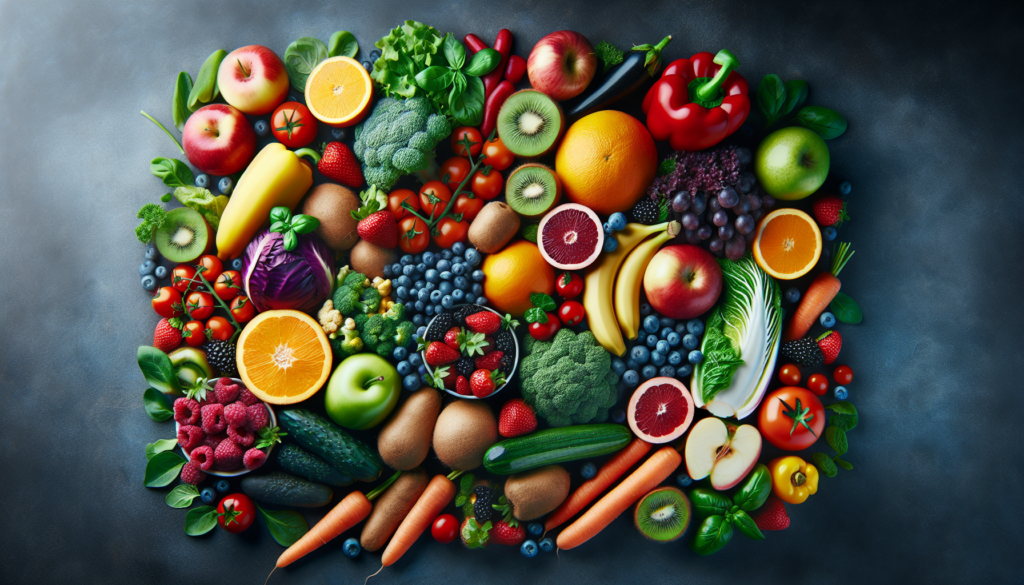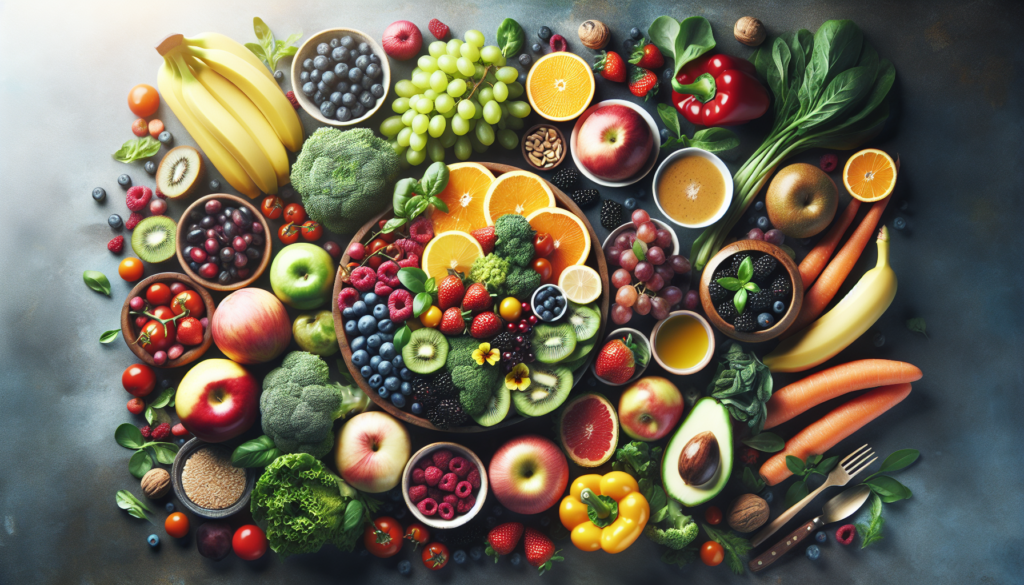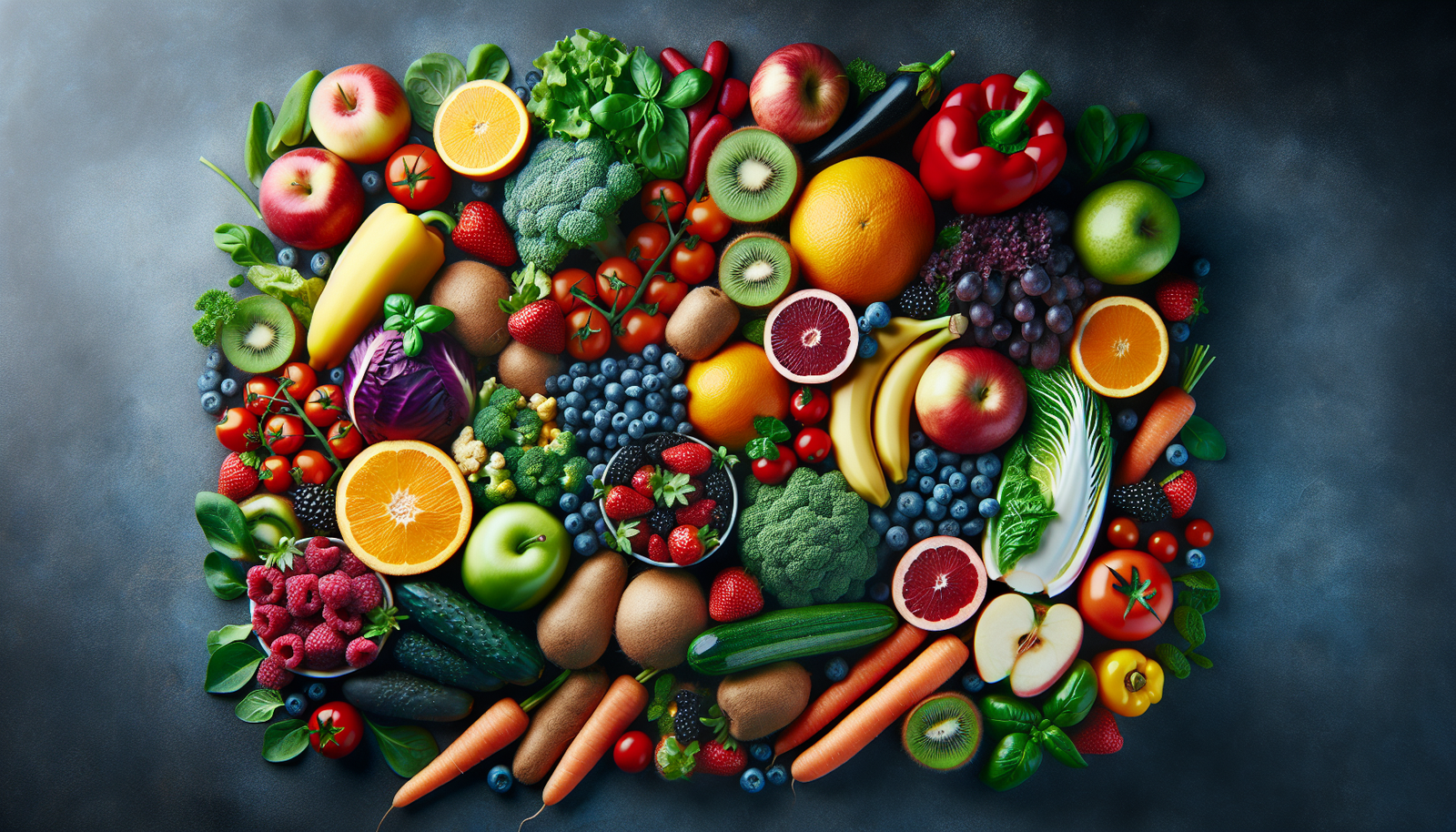So you want to start eating healthier but don’t know where to begin? Look no further! In this article, we will guide you through the ABCs of healthy eating habits, providing you with practical tips and suggestions to cultivate a balanced and nourishing diet. From incorporating more fruits and vegetables into your meals to making smarter choices when it comes to snacks, you’ll soon be well on your way to a healthier lifestyle. Get ready to embark on a delicious journey towards improved well-being!
A: Awareness of Nutritional Needs
Understanding Macronutrients
When it comes to maintaining a healthy diet, understanding the three macronutrients is key. Macronutrients are the nutrients that provide our bodies with energy: carbohydrates, proteins, and fats. Carbohydrates are our body’s main source of energy and can be found in foods such as grains, fruits, and vegetables. Proteins are essential for growth, repair, and maintenance of body tissues, and can be found in foods like lean meats, beans, and dairy products. Fats, while often misunderstood, are necessary for a well-rounded diet and can be found in healthy sources like avocados, nuts, and olive oil. By being aware of the roles these macronutrients play in our diet, we can make informed choices to support our nutritional needs.
Importance of Micronutrients
While macronutrients provide our bodies with energy, micronutrients are essential for overall health and well-being. Micronutrients include vitamins and minerals that our bodies need in smaller amounts but are crucial for various bodily functions. Vitamins, such as vitamin C and vitamin D, play vital roles in supporting the immune system, while minerals like calcium and iron are necessary for maintaining healthy bones and red blood cell production, respectively. By ensuring we consume a variety of fruits, vegetables, whole grains, and lean proteins, we can obtain the necessary micronutrients our bodies require.
Identifying Individual Dietary Requirements
Every individual is unique, with varying dietary needs and preferences. Identifying your own dietary requirements is essential for maintaining a healthy and balanced diet. Factors such as age, gender, activity level, and underlying health conditions can all influence your specific nutritional needs. It’s important to consult with a healthcare professional or a registered dietitian who can help you assess your individual dietary requirements and provide tailored recommendations. Taking the time to understand your specific needs will empower you to make choices that support your overall health and well-being.
B: Building a Balanced Plate
Portion Control
Maintaining portion control is crucial for building a balanced plate. It’s easy to overlook portion sizes and consume more than our bodies need, leading to weight gain and potential health issues. To ensure you’re practicing portion control, it’s helpful to familiarize yourself with recommended serving sizes for different food groups. Measuring utensils, food scales, and visual cues can all aid in portion control. Additionally, being mindful of your own hunger and fullness cues can help you gauge appropriate portion sizes for your individual needs.
Healthy Food Groups
Building a balanced plate involves incorporating a variety of healthy food groups. These include fruits, vegetables, whole grains, lean proteins, and dairy or plant-based alternatives. Fruits and vegetables are rich in vitamins, minerals, and fiber, providing essential nutrients for optimal health. Whole grains, such as quinoa and brown rice, are excellent sources of complex carbohydrates that provide sustained energy. Lean proteins, like chicken and tofu, are important for muscle growth and repair. Dairy or plant-based alternatives offer calcium and other essential nutrients. By including these food groups in your meals, you’ll ensure a well-rounded and nutritious diet.
Incorporating Fruits and Vegetables
Fruits and vegetables should be the stars of your plate, providing essential nutrients and fiber. Aim to fill half your plate with a colorful assortment of fruits and vegetables at every meal. The more vibrant and varied the colors, the more diverse the range of vitamins and minerals you’ll consume. Include a mix of leafy greens, cruciferous vegetables, berries, and citrus fruits to obtain a wide array of nutrients. Consider incorporating fruits and vegetables in different ways, such as adding them to smoothies, salads, stir-fries, or roasted dishes. By prioritizing fruits and vegetables, your body will reap the benefits of their nutritional value.

C: Choosing Healthier Alternatives
Reading Food Labels
Reading food labels is essential for making informed choices about the foods you consume. The nutrition facts panel on packaged foods provides detailed information about the product’s ingredients, serving size, and nutrient content. Look out for added sugars, unhealthy fats, and excessive sodium levels. Be mindful of portion sizes and consider the ingredients list to better understand what you are putting into your body. By becoming proficient in reading food labels, you can make healthier choices and prioritize products that align with your nutritional needs.
Reducing Processed Foods
Processed foods often contain excessive amounts of unhealthy fats, added sugars, and sodium, contributing to various health issues. While it may be challenging to eliminate all processed foods from your diet, reducing their consumption can have significant benefits. Opt for whole foods like fruits, vegetables, whole grains, and lean proteins whenever possible. Prepare your meals at home using fresh ingredients, and limit your intake of pre-packaged snacks and meals. By reducing processed foods, you’ll be on your way to a healthier and more nutritious diet.
Cooking Methods and Oils
The way we cook our food can greatly impact its nutritional value. Opt for cooking methods like baking, grilling, steaming, or sautéing instead of deep-frying or pan-frying, as these methods tend to add unhealthy fats. Choose healthier oils, such as olive oil or avocado oil, for cooking and salad dressings instead of oils high in saturated fats. By incorporating healthier cooking methods and oils, you can retain the nutritional value of your ingredients and reduce your intake of unhealthy fats.
D: Developing Mindful Eating Habits
Eating Slowly and Mindfully
In our fast-paced world, it’s easy to rush through meals without truly savoring the flavors and listening to our bodies’ cues. Developing mindful eating habits involves slowing down, taking the time to chew your food thoroughly, and paying attention to the taste, texture, and aroma of each bite. This practice allows you to truly enjoy and appreciate your meals while also giving your brain time to receive signals of fullness, preventing overeating. By eating slowly and mindfully, you can cultivate a healthier relationship with food and make more conscious choices.
Listening to Hunger and Fullness Cues
Being in tune with your body’s hunger and fullness cues is essential for maintaining an optimal balance. Learn to differentiate between physical hunger and emotional hunger. Physical hunger is a physiological need for nourishment, while emotional hunger is often driven by emotions, stress, or boredom. Paying attention to how your body feels before, during, and after meals can help you identify true hunger signals and prevent overeating. Practice eating until you feel satisfied, not overly full, allowing your body to digest and absorb nutrients properly.
Avoiding Emotional Eating
Emotional eating refers to the habit of using food as a way to cope with emotions rather than fueling the body’s needs. It’s important to develop alternative coping mechanisms for stress, sadness, or boredom that do not involve turning to food. Engage in activities such as exercise, meditation, journaling, or spending time with loved ones to distract yourself from emotional triggers. By recognizing emotional eating patterns and finding healthier ways to address your emotions, you’ll establish a healthier relationship with food and better overall well-being.

E: Establishing a Consistent Eating Routine
Regular Meal Times
Establishing regular meal times can help regulate your body’s metabolism and maintain stable energy levels throughout the day. Aim for three balanced meals a day, and consider incorporating healthy snacks if needed. By sticking to consistent meal times, your body will anticipate nourishment at certain intervals, preventing extreme hunger or excessive snacking. Remember to maintain portion control and include a variety of food groups in each meal.
Snacking Wisely
Snacks can be a healthy addition to your eating routine when chosen wisely. Opt for nutrient-dense snacks such as raw nuts, Greek yogurt, fruits, or vegetables with hummus. Avoid snacks high in added sugars and unhealthy fats. Be mindful of portion sizes and aim to satisfy your hunger without overindulging. Snacks should complement your overall diet and provide a mix of macronutrients and micronutrients.
Planning Ahead
To establish a consistent eating routine, it’s helpful to plan your meals and snacks ahead of time. Consider batch cooking or meal prepping to have nutritious options readily available during busy days. Plan your grocery shopping and choose healthy ingredients to support your dietary goals. By being prepared and organized, you can make healthier choices and avoid relying on unhealthy fast food or convenience options.
F: Finding Support and Motivation
Joining a Support Group
Embarking on a journey to develop healthier eating habits can be challenging, but finding support can make the process feel less daunting. Consider joining a support group or seeking out individuals who share similar goals. You can find online communities, local meetups, or even engage with friends and family members who are also working towards healthier lifestyles. Sharing experiences, challenges, and successes with others can provide motivation, encouragement, and valuable insights.
Tracking Progress
Documenting your progress can be an effective way to stay motivated and track your achievements. Keep a food journal or use a mobile app to log your meals, snacks, and beverages. This can help you identify patterns, monitor portion sizes, and ensure you’re meeting your nutritional goals. Additionally, consider tracking other aspects of your well-being, such as energy levels, mood, and any changes in your body composition. Celebrate milestones and use your progress as a reminder of how far you’ve come.
Rewarding Healthier Choices
Rewarding yourself for making healthier choices can reinforce positive behaviors and keep you motivated on your journey. Treat yourself to non-food rewards, such as a relaxing bath, a new book, or a workout class you’ve been wanting to try. Acknowledge the progress you’ve made and celebrate the small victories along the way. Remember, building healthy eating habits is a continuous process, and rewarding yourself can help make the journey more enjoyable and sustainable.
G: Grasping the Importance of Hydration
Water as the Go-To Beverage
Staying hydrated is crucial for maintaining optimal health and well-being. Water should be your go-to beverage throughout the day, as it helps your body function properly, regulates body temperature, and aids digestion. Aim to drink at least eight cups (64 ounces) of water a day, or more if you’re physically active or live in a warm climate. Carry a refillable water bottle with you to ensure you have easy access to water wherever you go.
Benefits of Staying Hydrated
Drinking enough water offers numerous benefits for your overall health. Hydration helps to maintain healthy skin, lubricate joints, flush out toxins, and regulate bowel movements. It can also help with weight management, as thirst is often mistaken for hunger, leading to unnecessary snacking. Proper hydration is essential for optimal cognitive function and concentration as well. By staying hydrated, you’ll feel more energized, focused, and ready to take on the day.
Limiting Sugary Drinks
When it comes to hydration, it’s important to be mindful of the beverages you choose. Sugary drinks, such as soda, fruit juices, and sports drinks, can be detrimental to your health due to their high sugar content. These beverages provide empty calories and can contribute to weight gain and the risk of developing chronic conditions like diabetes and heart disease. Opt for water, herbal tea, or infused water with fruits and herbs to satisfy your thirst without unnecessary added sugars.
H: Handling Food Sensitivities and Allergies
Identifying Food Intolerances
Food intolerances can cause uncomfortable symptoms such as bloating, abdominal pain, and diarrhea. Common food intolerances include lactose, gluten, and certain FODMAPs (fermentable oligo-, di-, mono-saccharides and polyols). If you suspect you have a food intolerance, keeping a food diary and working with a healthcare professional or registered dietitian can help identify trigger foods. Elimination diets can also be helpful in pinpointing specific food intolerances. By knowing your food intolerances, you can make informed choices and find suitable alternatives to avoid discomfort.
Managing Allergic Reactions
Food allergies can be severe and even life-threatening. If you have known food allergies, it’s crucial to avoid consuming those specific allergens to prevent an allergic reaction. Working with a healthcare professional or allergist can help you identify and manage your allergies effectively. Be vigilant about reading food labels and ask restaurant staff or hosts about potential allergens in the meals served. Carry an epinephrine auto-injector if prescribed, and educate those around you about your allergies to ensure your safety.
Seeking Professional Advice
Handling food sensitivities and allergies can be complex, and seeking professional advice is paramount. If you suspect you have a food intolerance or allergy, consult with a healthcare professional or a registered dietitian. They can guide you through the diagnostic process, help you develop suitable meal plans, and provide recommendations for suitable alternatives or modifications. It’s important to work with a trusted professional to ensure you are properly managing your dietary needs and maintaining a balanced diet.
I: Introducing Mindful Snacking
Choosing Nutrient-Dense Snacks
Snacking can be a great way to fuel your body between meals, especially when chosen mindfully. Opt for nutrient-dense snacks that provide essential vitamins, minerals, and fiber. Choose options like raw nuts, seeds, Greek yogurt, or whole fruits, which offer a good balance of macronutrients. Avoid snacks high in added sugars, unhealthy fats, and artificial ingredients. Be mindful of portion sizes and listen to your body’s hunger cues to avoid mindless snacking.
Portion Control and Snack Distractions
While snacks can be a healthy addition to your diet, portion control is important. Avoid mindlessly eating directly from the bag or container, as it can lead to unintentional overconsumption. Portion out your snacks to maintain control and awareness of how much you’re eating. Additionally, be mindful of distractions while snacking. Avoid eating while watching TV or scrolling through your phone, as it can lead to mindless eating and overindulgence. Instead, find a quiet and comfortable space where you can focus on enjoying your snack.
Incorporating Healthy Snacking Habits
Incorporating healthy snacking habits can make a significant difference in your overall dietary pattern. Instead of reaching for unhealthy processed snacks, make it a habit to have pre-cut fruits, vegetables, or homemade trail mix readily available. Plan your snacks ahead of time to ensure you have nutritious options on hand when hunger strikes. Keep your pantry and refrigerator stocked with healthier alternatives to curb cravings and avoid reaching for unhealthy choices. By proactively incorporating healthy snacking habits into your routine, you’ll be able to fuel your body between meals with nourishing options.
J: Judiciously Adding Treats Occasionally
Understanding Moderation
While maintaining a healthy diet is important, it’s equally important to allow yourself occasional treats without guilt or restriction. Understanding moderation means finding a balance between nourishing your body with wholesome foods and indulging in occasional treats without overdoing it. Denying yourself your favorite treats may lead to a sense of deprivation, making it harder to maintain a balanced diet in the long run. By adopting a mindset of moderation, you can enjoy your favorite treats in a mindful and controlled manner.
Balancing Indulgences
When indulging in treats, it’s important to find a balance that aligns with your overall dietary goals. If you have a craving for a sugary dessert, for example, try to balance it by incorporating healthier choices throughout the day. Prioritize nutrient-dense meals and snacks that support your nutritional needs and opt for smaller portions of treats. By finding a balance and incorporating treats mindfully, you can enjoy occasional indulgences without compromising your overall health and well-being.
Avoiding Restrictive Diets
Restrictive diets that completely eliminate certain food groups can be challenging to sustain and may lead to nutrient deficiencies or disordered eating patterns. It’s important to avoid extreme restrictions and instead focus on creating a long-term sustainable relationship with food. By allowing yourself occasional treats and incorporating a wide variety of foods in your diet, you can maintain a healthier mindset and relationship with food. Remember, a balanced and flexible approach to eating is key to achieving a lifelong sustainable healthy lifestyle.
In conclusion, developing healthy eating habits is a journey that requires awareness, mindfulness, and balance. By understanding macronutrients and micronutrients, building a balanced plate, choosing healthier alternatives, developing mindful eating habits, establishing a consistent eating routine, finding support and motivation, grasping the importance of hydration, handling food sensitivities and allergies, introducing mindful snacking, and judiciously adding treats occasionally, you can cultivate a nutritious and sustainable diet that supports your overall health and well-being. Remember, it’s not about perfection but rather progress and making small, sustainable changes that will benefit you in the long run. Start with small steps and embrace the process of developing healthy eating habits that are tailored to your individual needs and preferences.

